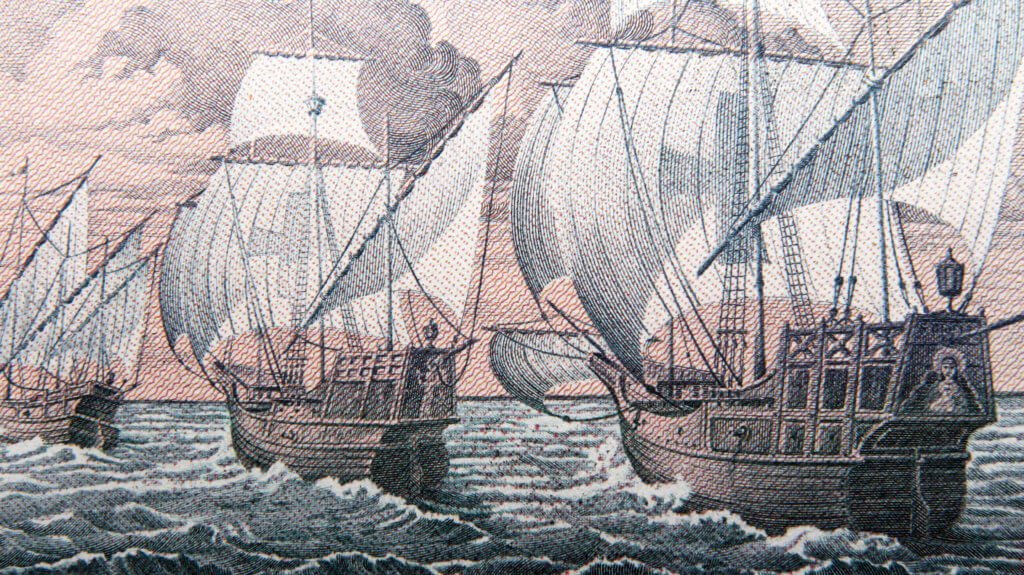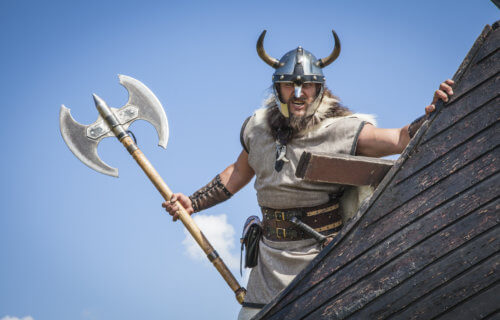GRONINGEN, Netherlands — Move over Columbus Day, a study finds we may want to think about adding “Viking Day” to the calendar. Researchers in the Netherlands have found evidence showing that Vikings landed in America one thousand years ago – at least 471 years before Christopher Columbus’ famous journey.
Historians credited the Italian-born explorer for being the first European to land in America during his voyage of 1492 for many years. However, evidence has slowly emerged that Vikings got there centuries earlier, although exactly when has remained unclear. Now, an international team of scientists has now shown that Europeans were already active in the Americas as early as 1021 AD.
Historians know that the Vikings undertook epic voyages in their iconic longships. To the west, they established settlements in Iceland, Greenland, and eventually a base at L’Anse aux Meadows in Newfoundland, Canada. Unfortunately, it has been hard to tell when their first transatlantic trip actually took place — until now.
The new date marks the earliest known point in history that humans crossed the Atlantic Ocean and human migration became a global event. In the new study, researchers examined ancient wood objects used by Vikings at L’Anse aux Meadows to find out the age of their settlement.

Wood and a solar storm help reveal the past
The three wooden artifacts, all coming from different trees, each served a purpose that study authors believe links them to the Vikings landing in Canada. Each piece also displayed “clear evidence” of cutting and slicing by metal blades, a material not produced by the indigenous population of that time.
The team was able to determine the exact year (1021) thanks to a massive solar storm in 992 AD. It produced a distinct radiocarbon signal in tree rings the following year.
“The distinct uplift in radiocarbon production that occurred between 992 and 993 AD has been detected in tree-ring archives from all over the world,” says research director Michael Dee in a university release.
“Finding the signal from the solar storm 29 growth rings in from the bark allowed us to conclude that the cutting activity took place in the year 1021 AD,” explains study first author Dr. Margot Kuitems.
Finding proof to back up ancient stories
The researchers add that the total number of Viking expeditions to the Americas and the duration of their stay across the Atlantic remains a mystery. All current data suggests that the whole endeavor was “somewhat short lived” and only had a small cultural and ecological impact on the native populations. However, botanical evidence from L’Anse aux Meadows confirms that the Vikings did explore lands further south than Newfoundland.
The Dutch team concludes that 1021 AD is now the earliest year science can prove that Europeans (in this case, Vikings) lived in the Americas. Until now, previous dates noting Viking exploration have come from Icelandic Sagas. Unfortunately for historians, these stories began as oral histories, with others writing them down centuries after the events they describe.
Although these stories are often contradictory and sometimes fantastical, the Sagas do suggest that early encounters between Europeans and the indigenous people could be either violent or peaceful. However, scientists have found little archaeological evidence to support the Sagas.
“Other medieval accounts also exist, which imply prominent figures on the European mainland were made aware the Vikings had made landfall across the Atlantic,” the researchers conclude.
The findings appear in the journal Nature.
This story was originally published by StudyFinds in October 2021.
South West News Service writer Stephen Beech contributed to this report.


But, since the Vikings discovery did not lead to any full European colonization; their discovery does not merit the accolade.
We already knew they did. So what? They didn’t have a highly developed business and huge armies backing them — and their climate and small population kept them from having all the diseases that were a disaster to the Indians.
Reminds me of Obama wanting to divert money from NASA to Moslem countries so they could teach their kids about their scientific advances during medieval times. Like they didn’t teach their kids that already.
There were Israelite Priests in todays Tennessee, buried in a row, 1,000 years before the Vikings. A stone was found at that site, with a message in ancient Hebrew. That stone in now in the museum, at Washington, D.C. Surprise, surprise. So does it really matter who was first?